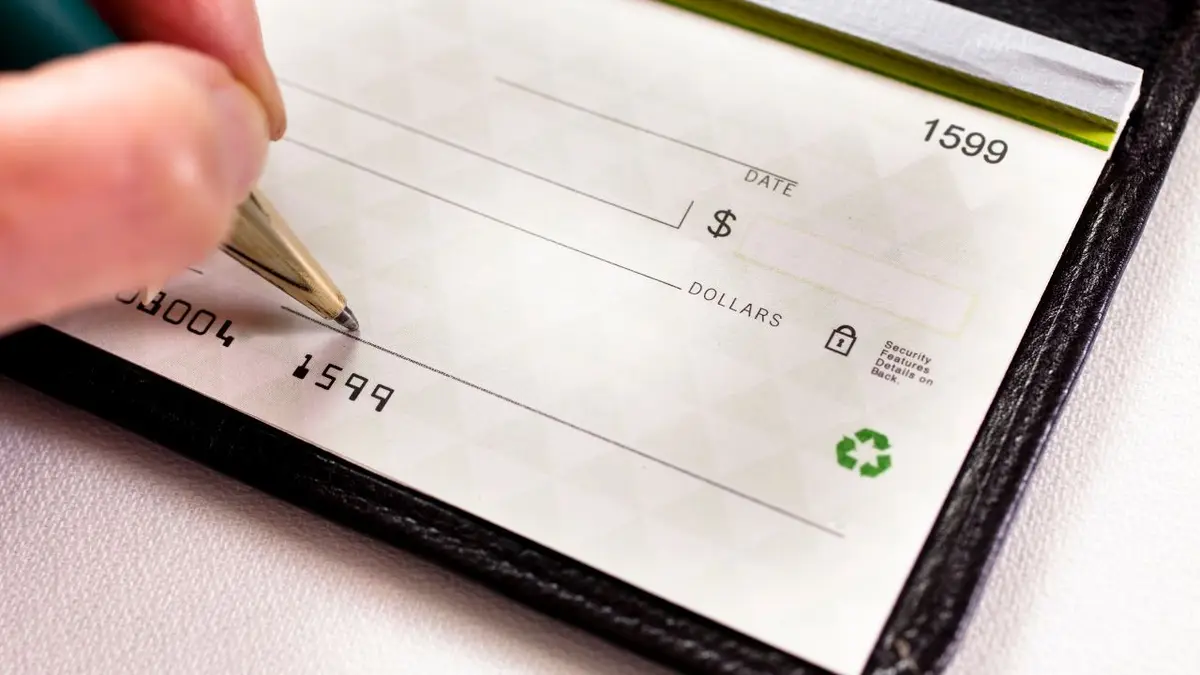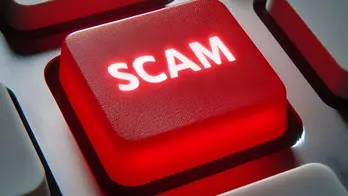To keep you and your money safe, I make it a point to always let you know about spreading scams, from crypto catfishing to AI deepfakes. I bet you’re going to be surprised by this news: The crime that shot up 400% last year is old-school check fraud.
We’re giving away a $500 Amazon gift card. Enter to win now. No purchase necessary.
It’s not high-tech, but it is highly effective. In 2023, check scammers stole $26.2 billion from Americans like you and me, right out of our mailboxes. You need to make sure you don’t become a statistic.
HOW TO (KINDLY) ASK PEOPLE NOT TO POST YOUR KIDS' PHOTOS ON SOCIAL MEDIA
How crooks write themselves a blank check
Scammers coordinate in private groups on Telegram, Facebook or TikTok to share tips and sell tools that make it easy for scams to spread. One of their tricks? Buying universal keys that can open any USPS drop box or snapping up books of blank checks from the Dark Web.
But plenty of crooks just swipe checks right from your mailbox. Then, they use simple household chemicals like acetone to dissolve the ink and write themselves (or their alias) some spending money.
Fraudsters deposit their haul at an ATM or right from their couch through a banking app, then they withdraw the cash in chunks so it doesn’t trigger alerts. Before you or your bank know it, they’re on their way to the casino, buying designer goods or investing in real estate — you name it.
RELATED: 563,588 people start their day with this free tech newsletter.

What are banks doing about it?
Banks are cracking down on fraud with stricter deposit policies and extended hold times on deposits. So, if you’ve noticed your funds aren’t clearing as fast as they used to, it’s because banks are taking extra time to verify deposits for potential fraud.
A recent viral TikTok glitch exploited J.P. Morgan's instant access feature for deposits from bad checks. Scammers flooded in, and many ended up being sued — proof crime doesn’t pay.
SMARTPHONE TRICKS EVERY IPHONE AND ANDROID USER SHOULD KNOW
5 ways to protect yourself and your money
- Use a USPS-approved locking mailbox. This one ($99, 9% off) has an extra layer of security that keeps casual thieves from easily grabbing your mail.
- Set up notifications for suspicious activity. Check your bank account regularly for anything unusual. I have alerts set up for withdrawals over a certain dollar amount, as well as fraud alerts.
- Skip the mailbox. For recurring bills or one-time payments, apps like Zelle, Venmo or PayPal, or even ACH transfers, are secure and eliminate the risk of stolen checks. If you really need to send something sensitive, like birthday money, drop it off inside a post office instead of using an outdoor mailbox.
- Sign up for USPS Informed Delivery. This free service lets you see and track your incoming mail online, so you’ll know if something goes missing before it arrives (or doesn’t).
- Only use fraud-resistant pens. My favorite low-tech solution is to write checks with a pen specifically designed to prevent ink from being altered. This 4-pack is my go-to.

If any of your checks go missing or you suspect fraud, file a report immediately — not just with your bank, but also with USPS and your local police department. Be sure to ask for a case number so you can track the progress of your claim.
The biggest checkwriters are baby boomers. They don’t like change.
SHARING IS NOT ALWAYS CARING: 7 DANGEROUS THINGS TO POST ONLINE
Get tech-smarter on your schedule
Award-winning host Kim Komando is your secret weapon for navigating tech.
- National radio: Airing on 500+ stations across the US - Find yours or get the free podcast.
- Daily newsletter: Join 559,000 people who read the Current (free!)
- Watch: On Kim’s YouTube channel
- Podcast: "Kim Komando Today" - Listen wherever you get podcasts
Copyright 2025, WestStar Multimedia Entertainment. All rights reserved.


.svg)



.svg)
.svg)